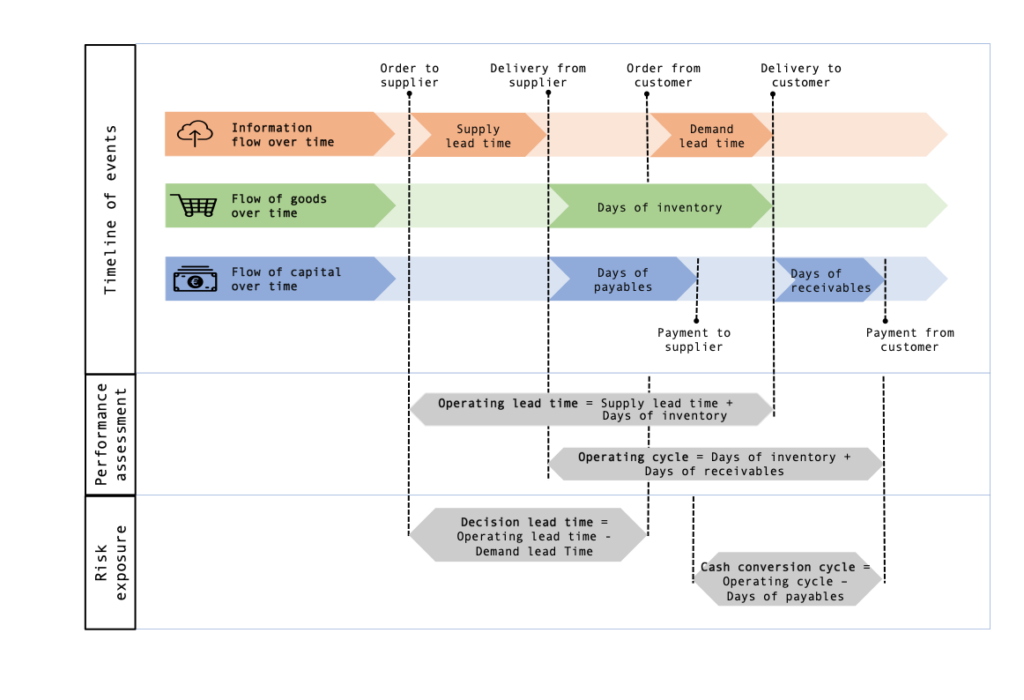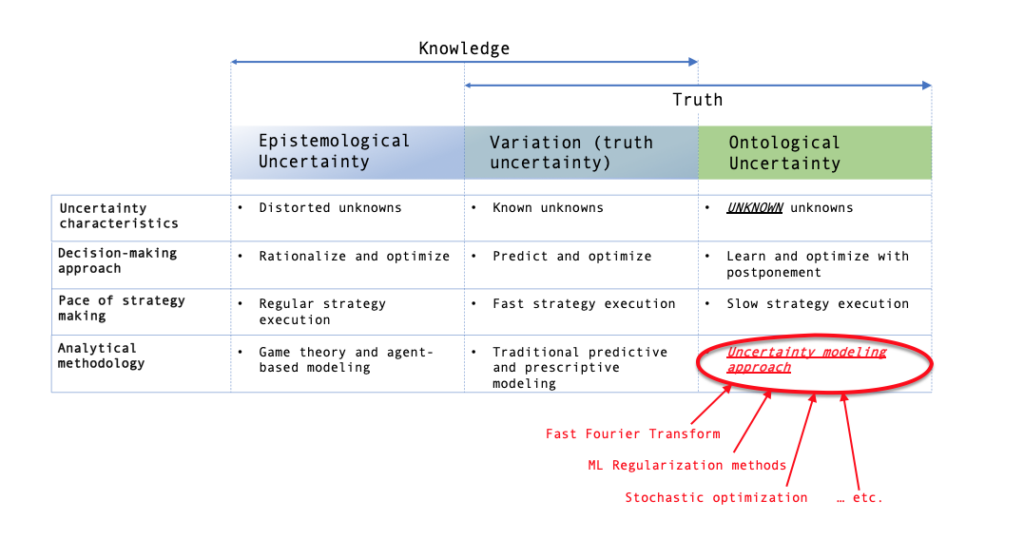Supply chain analytics is an analytical discipline that uses advanced analytical methods to solve supply chain management problems. We are experts in this discipline, and we have developed this website to share our thoughts.
Supply chains are at the center of organizations. Thus, supply chain analytics is crucial for the digital transformation of companies. In 2021, companies invested $4.1 trillion in digital transformations. Nevertheless, it is estimated that 70% for such investments fail. This high failure rate can be attributed, partially or completely, to inaccurate diagnosis of supply chain problems and lack of organizational capabilities to characterize and manage uncertainties. To address these issues, we have developed some sophisticated tools and methods to ease the adaption of supply chain analytics in organizations.
Unified Value Chain Framework
In a business transaction, companies exchange information, capital, and goods or services. Although operational factors lie at the center of business transactions, a complete value chain framework is not possible without considering information and capital flow dynamics. In a complete framework, there are five salient parameters that characterize the operational and financial aspects of companies: (1) Supply lead time, (2) demand lead time, (3) days of inventory, (4) days of payables, and (5) days of receivables. The value chain framework, illustrated below, shows how the salient parameters are determined depending on some operational activities (e.g., procurement order placed to a supplier, delivery of raw materials by the supplier, payment to the supplier, purchase order received from a customer, delivery of goods to the customer, and payment collected from the customer).

Using the salient parameters, organizations can determine operating lead time, operating cycle, decision lead time, and cash conversion cycle. Operating lead time and operating cycle can be considered performance metrics. Operating lead time indicates how long it takes to create value for customers, whereas operating cycle shows how long it takes to generate revenues from customers. The shorter their values, the more powerful the business model of a company. Decision lead time and cash conversion cycle can be considered risk metrics. They are indicators of operational and financial risk exposure of companies.
Analytical applications to supply chain management must aim to improve performance metrics and/or reduce the risk exposure of organizations by optimizing the operational activities. Our value chain framework connects operational activities to performance and risk metrics. Using this framework, companies would be able to set the path of supply chain analytics before starting digital transformation projects.
Uncertainty Modeling
How does uncertainty emerge in supply chains? Answering this question is very important because it helps us develop the right analytical approach for a given problem. Uncertainty determines the magnitude of the barrier between truth and our knowledge. If our knowledge about supply chain dynamics reflects the existing state of operations correctly, the uncertainty can be eliminated substantially. In this case, supply chains are only exposed to some variations due to external factors, which is referred to as the truth uncertainty by economists. If our knowledge is distorted due to information inaccuracy or agency conflicts, supply chains are exposed to epistemological uncertainty such that some parties of supply chains can benefit from information asymmetry while hurting the profitability of others. If we lack basic knowledge that is only enough to understand the dynamics of supply chains, ontological uncertainty (the most severe type of uncertainty) emerges. The right analytical approach to solve supply chain problems strongly depends on the uncertainty type, as summarized here:

We have applied the uncertainty modeling approach to several companies in the automotive, pharmaceutical, consumer packaged goods, and agriculture industries and observed substantial improvements in reducing operational costs. We share our experience with interested readers in the Supply Chain Analytics book, published by Springer in 2023:
Supply Chain Analytics: An Uncertainty Modeling Approach
Here you can find information about our textbook and the accompanying web application. (published in 2023 by Springer)
Who are we?
Please feel free to contact us to chat about uncertainties and analytical models used to solve supply chain problems. Visit the About Us page to learn more about the team and our mission.
